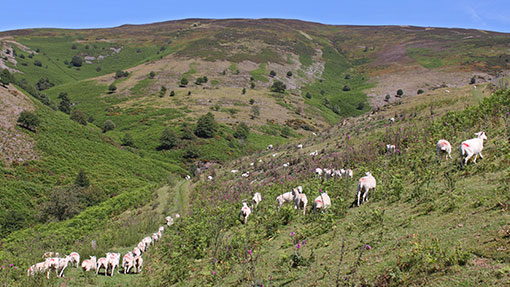TFA fears ‘disaster’ over moorland payments

DEFRA and the Welsh Government risk “disaster” unless they reconsider their plans for moorland payments as part of CAP reform implementation, according to the Tenant Farmers Association.
The TFA has warned that unless a robust set of criteria are introduced that make sure moorland payments can only be claimed by active graziers, not large landowners who are not really farming the land, it risks money being siphoned off to the wrong people.
George Dunn, TFA chief executive, said over recent weeks there had been lots of debate about what the payment rates should be in the different areas.
See more CLA backs push for higher moorland payments
See more NFU denies opposing more money for uplands
“The TFA has said all along that payment rates in the lowland and upland areas should be the same, whereas moorland areas should be treated differently given the extent to which non-agriculturally active land owners in moorland areas could be able to capitalise on payments illegitimately,” said Mr Dunn.
“The payment levels suggested seem sensible, but we need to be sure there is sufficient protection against people who may try to take the payment if they are not actively grazing the land.”
Mr Dunn said the TFA’s preferred option was to actually see support for moorland areas delivered through Pillar 2 of the CAP [rural development schemes] and focused on grazing livestock systems.
Its primary lobbying position had always been that there needed to be an agri-environment scheme for moorland areas focused on grazing livestock as a replacement for the Upland ELS scheme, he said.
This would ensure farmers in moorland were properly rewarded for the significant agri-environment benefits they provided through grazing livestock systems in these most fragile and important areas.
The fact the Welsh Government and DEFRA seemed resistant to this approach was causing “alarm and distress” for farmers in moorland areas.
“If neither government is prepared to think creatively about this issue we have no option but to argue that payment rates under the basic payment scheme should be increased for moorland in line with other areas,” said Mr Dunn.
“However, there will need to be a robust set of criteria to ensure the payment is only received by active graziers and is not siphoned off to line the pockets of other landowners.”
The TFA is suggesting the introduction of a three-strand approach to defining an active farmer in these circumstances.
A claimant would need to show they are in occupation of the land, taking entrepreneurial risk for the activities on that holding and in day-to-day management control.
